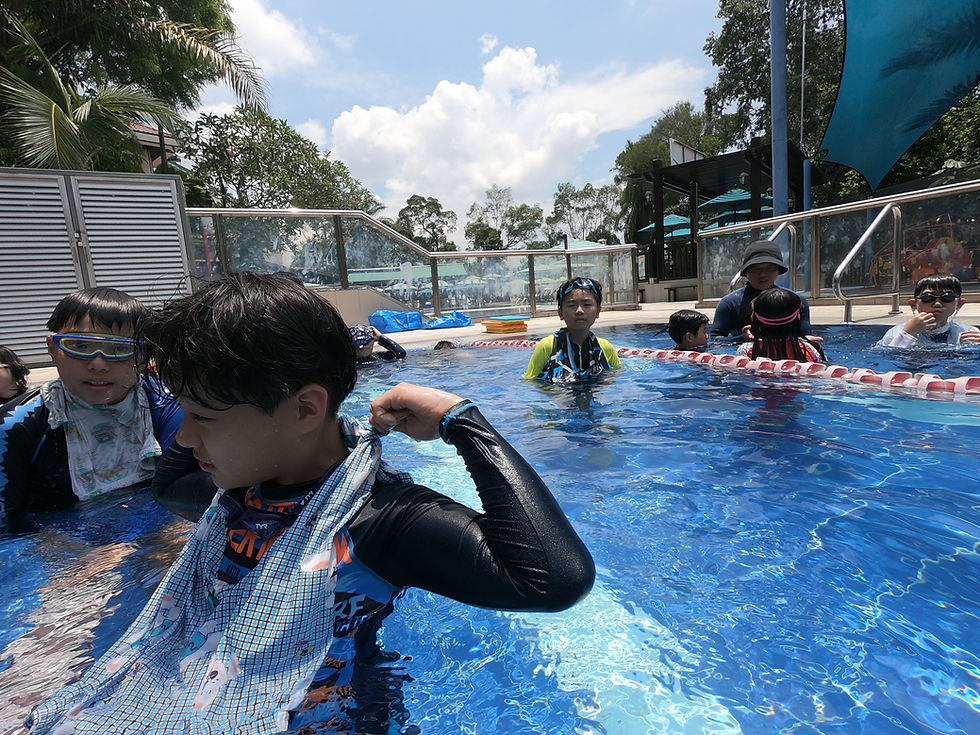How to Build Endurance for Ironman Triathlon Swimming
- SG Sink Or Swim

- Aug 28, 2025
- 2 min read

For triathletes, the Ironman swim leg is the first big challenge of race day: a 2.4-mile (3.8 km) open water swim that tests not only physical stamina but also mental toughness and strategy. While biking and running often steal the spotlight, swimming endurance is the foundation that sets the tone for the rest of the race. If you exit the water exhausted, your bike and run performance will suffer.
This guide will walk you through practical strategies and training methods to build the swimming endurance you need for Ironman success.
🏊 Why Endurance Matters in Ironman Swimming
Unlike pool races, Ironman swimming involves:
Open water conditions (waves, currents, temperature shifts).
Mass starts and crowded packs, requiring calmness and control.
Energy conservation, since you still have 112 miles of biking and a marathon ahead.
Building endurance ensures you can cover the distance efficiently, confidently, and with enough energy left for the rest of the event.
💪 Key Strategies to Build Swim Endurance
1. Base Building Through Volume
Start with 3–4 swim sessions per week.
Gradually increase total weekly volume to 10,000–12,000 yards/meters.
Long endurance swims (4,000–5,000 meters) once per week simulate race conditions.
✅ Example: 3,000m continuous swim at moderate pace, focusing on steady breathing and rhythm.
2. Incorporate Interval Training
Intervals help develop both aerobic capacity and muscular endurance.
Mix in sets like:
10×400m at race pace with 30 seconds rest
20×100m alternating moderate and hard pace
Intervals keep your body working near Ironman pace but with controlled breaks.
3. Open Water Practice
Swim in lakes, rivers, or the ocean whenever possible.
Practice sighting every 6–8 strokes to stay straight.
Train with groups to simulate race-day contact and drafting.
🌊 Tip: Include open water sessions of 60–90 minutes to build mental and physical comfort.
4. Strength and Resistance Training
Use paddles, fins, and drag suits for resistance sets.
Dryland training: pull-ups, lat pull-downs, planks, and medicine ball rotations.
Strong shoulders, lats, and core muscles improve pulling efficiency.
5. Breath Control and Relaxation
Practice hypoxic drills (e.g., breathing every 5–7 strokes).
Focus on exhaling fully underwater to stay calm and oxygenated.
Mental endurance is just as important as physical endurance.
6. Brick Workouts
Swim-to-bike transitions are unique to triathlon.
Occasionally follow long swim sets with short bike rides to train your body for post-swim adjustments.
🧘 Nutrition and Recovery
Practice pre-swim fueling to avoid energy crashes.
Hydrate before swims, especially in saltwater conditions.
Prioritize recovery with stretching, mobility, and sleep.
🚀 Sample Ironman Swim Endurance Session
Warm-up: 600m (200 swim, 200 pull, 200 kick)
Main Set:
3×1000m at Ironman pace with 1:00 rest
10×100m at slightly faster than race pace, 20 sec rest
Cool-down: 400m easy swim
🏆 Conclusion
Building endurance for Ironman triathlon swimming requires a balance of long-distance sessions, interval training, open water practice, and strength development. The goal isn’t just to survive the 2.4 miles — it’s to exit the water calm, efficient, and energized for the bike and run ahead.
With structured training and consistency, you’ll transform your swim leg into a confident start rather than a draining challenge.





Comments